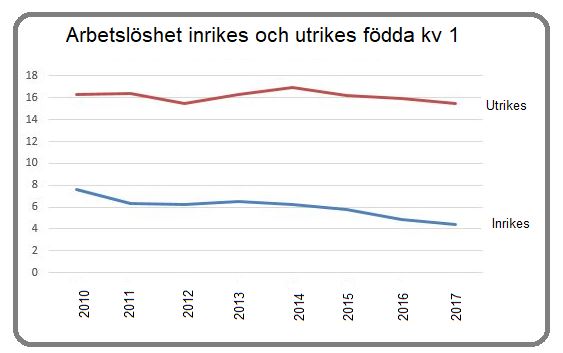Refugee immigration not primarily about money
Document Actions
Document Actions
A fresh report from the Swedish Public Employment Service shows the country has a strong labour market. The labour supply is set to grow by 149,000 people in 2017 and 2018, and labour participation is expected to grow both among people of foreign and domestic heritage.
Eight in ten of the new jobs are expected to go to people of foreign heritage. The private and public service sectors are responsible for the majority of the job growth.
Unemployment levels are set to fall from 7 to 6.6 percent in 2017. In 2018 it is expected to grow to 6.7 percent as more people will be registered as jobseekers. Unemployment levels are expected to continue to fall among people of domestic heritage, but will grow somewhat among people of foreign heritage. This year there will be more people registering with the employment service, because a sizeable proportion of the high number of refugees arriving in the autumn of 2017 are now trying to find work. The number of registered unemployed of foreign heritage is predicted to grow from 50 to 60 percent towards the end of 2017/2018.
In 2018, registered unemployed with a weaker position in the labour market are expected to represent 78 percent of all registered unemployed. The group consists of non-European older people between 55 and 64, people with disabilities which reduces their working ability and unemployed people with no upper secondary education. 130,000 of those registered with the employment service have no upper secondary education. 90,000 of them are of foreign heritage.
(Source: Swedish Public Employment Service)

The graph shows unemployment levels for people of domestic and foreign heritage for the first quarter of each year.